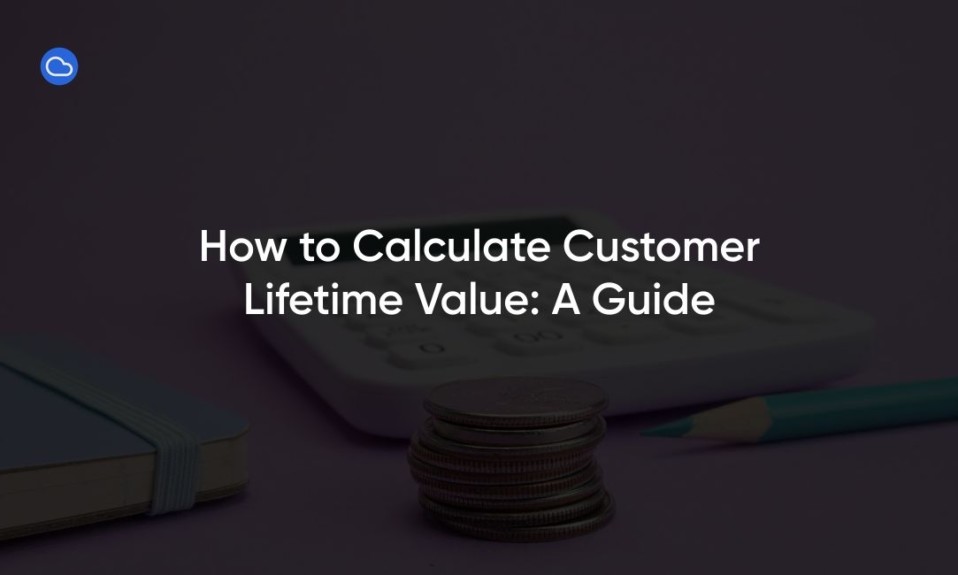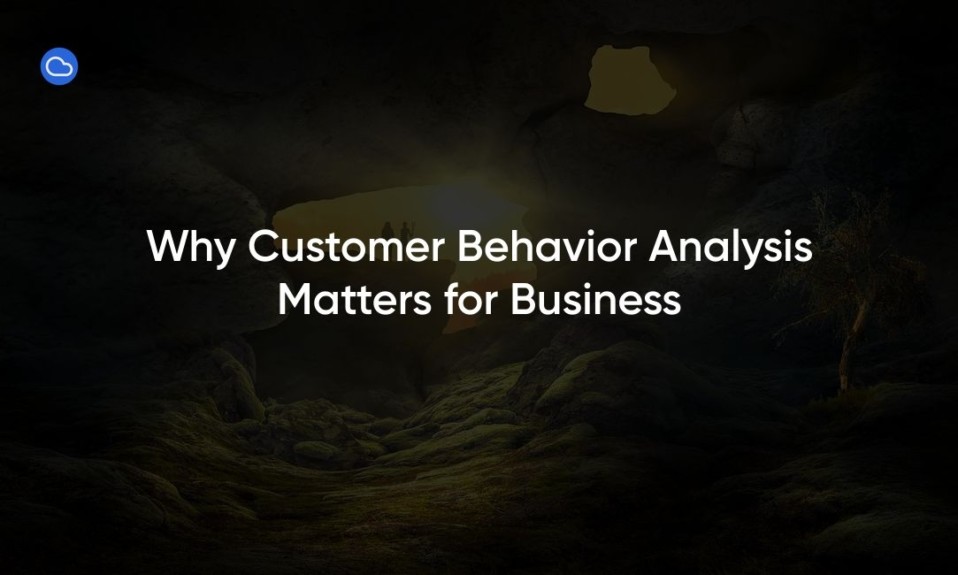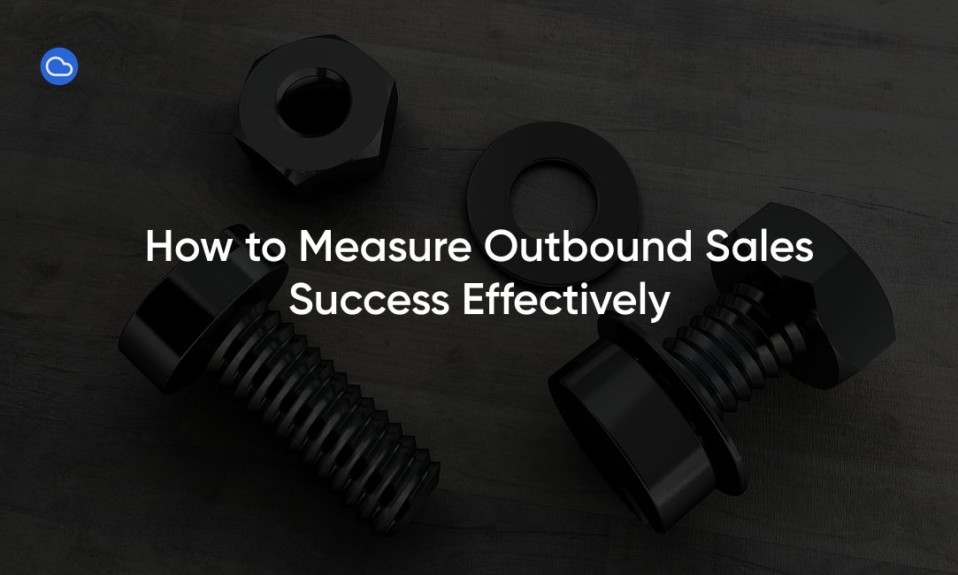What if your customer acquisition costs are silently eating into profits while high-value clients go unnoticed?
Understanding how to calculate customer lifetime value separates sustainable growth from costly guesswork.
Without this metric, businesses risk overspending on short-term gains and missing retention opportunities that drive long-term revenue.
This guide breaks down CLV calculation into clear steps, from basic formulas to advanced predictive models.
You’ll discover the key components like purchase frequency and customer lifespan, learn multiple calculation methods, and explore tools to automate the process.
By the end, you’ll be equipped to make data-driven decisions that boost profitability and customer loyalty simultaneously.
What is Customer Lifetime Value (CLV)?
Customer Lifetime Value (CLV) represents the total revenue a business can anticipate from a customer throughout their entire relationship. Understanding this metric is vital for any business aiming for long-term success.
It encapsulates not just the monetary aspect but also the potential loyalty that a customer may bring. When I first explored CLV, I realized how it transcends simple sales figures; it reveals insights into customer behavior and spending patterns.
CLV guides decisions about customer acquisition and retention strategies. Businesses that prioritize CLV can tailor their marketing efforts effectively. Have you considered how much more profitable your high-value customers actually are?
An impressive CLV means you’re gaining more value from each customer than you’re spending on acquiring them. I honestly feel like grasping this concept can genuinely change how you approach growth.
This metric involves analyzing both direct sales and the ongoing relationship a customer maintains with your business. The way I see it, focusing on CLV can lead to healthier profit margins and improved customer satisfaction.
As you start measuring CLV, think about how much each customer means to your overall strategy. Understanding their potential lifetime value can steer you to make more informed, strategic decisions that align with your business goals.
Why is Calculating CLV Important?
Calculating Customer Lifetime Value (CLV) transforms how businesses make decisions around investment and growth. This metric provides crucial data to assess how much you can afford to spend on acquiring customers while maintaining profitability.
Tracking CLV aids in developing informed marketing strategies. When you know the value each customer brings over time, it becomes easier to allocate resources effectively. Imagine using your marketing budget to target customers who exhibit higher lifetime value—this approach heightens the chance of increased revenue.
Companies can streamline their customer acquisition costs by identifying high-value customer segments. Understanding where to invest leads to optimized marketing efforts, ultimately driving better returns. Plus, you’ll avoid the common pitfall of throwing money at acquiring customers who won’t stick around.
CLV also plays a key role in customer retention. Businesses can analyze what keeps customers coming back. Investing in long-term relationships often yields a greater payoff than chasing one-off sales.
-
Helps determine appropriate customer acquisition spending
-
Identifies your most valuable customer segments
-
Guides resource allocation for marketing campaigns
-
Improves retention strategies by focusing on high-value customers
Focusing on creating loyalty enhances the overall customer experience and can lead to less churn. At the end of the day, it’s about building relationships that last—not just making quick sales.
Components of Customer Lifetime Value
Average Purchase Value
Calculating the average purchase value helps you understand customer spending habits. This metric is simple yet powerful. To find it, divide total revenue by the number of orders during a specific period. This straightforward formula gives insight into how much, on average, each customer spends per transaction.
I’ve seen firsthand how knowing your average purchase value can guide marketing efforts and inventory decisions. For instance, if you notice a higher average purchase value during a sale, it might inform future promotional strategies.
Think about how you can use this information to optimize pricing strategies or improve customer loyalty programs. Knowing exactly what customers spend can help you create more personalized experiences. This focus makes all the difference in fostering lasting relationships with your clientele.
Purchase Frequency
Determining how often customers make purchases provides valuable insights for your business. You can calculate this by dividing the total number of orders by the unique customers within a specific timeframe. This metric gives you a clear picture of customer behavior and engagement.
Understanding purchase frequency helps identify loyal customers, allowing you to tailor strategies that keep them coming back. For instance, if your stats indicate high purchase frequency, it might signal satisfaction with your product or service. On the other hand, lower frequency could indicate a need for improvement in customer experience.
Are you tracking how often your best customers return to make purchases? This information can be gold for your marketing team.
Tracking this metric regularly can guide your marketing efforts and inventory decisions. You might even discover trends that lead to innovative upsell opportunities. Ultimately, purchase frequency becomes a key component in enhancing customer lifetime value and improving overall profitability.
Customer Value
Calculating your customer’s annual value is simpler than you might think. Start by determining the average purchase value. Divide your total revenue by the number of orders in a specific period. This gives you a clear picture of what a customer typically spends per transaction.
Next, assess how often customers engage with your business. Divide the total number of orders by unique customers within the same timeframe. This frequency will guide your understanding of customer habits.
Once you have these figures, multiply the average purchase value by the purchase frequency. This calculation reveals the annual value each customer brings to your business. Having this insight can deeply influence business strategies and improve customer relationship management.
|
Component |
Formula |
Example |
|---|---|---|
|
Average Purchase Value |
Total Revenue ÷ Number of Orders |
$10,000 ÷ 200 = $50 |
|
Purchase Frequency |
Number of Orders ÷ Number of Unique Customers |
200 ÷ 50 = 4 purchases per year |
|
Customer Value |
Average Purchase Value × Purchase Frequency |
$50 × 4 = $200 per year |
Average Customer Lifespan
Estimating average customer lifespan plays a significant role in understanding long-term relationships with customers. This estimation often involves analyzing churn rates and historical data. Churn rate refers to the percentage of customers who stop using your service within a specific period.
By calculating this percentage, you can get a clearer picture of how long customers typically stay with your business. Many businesses overlook the value of tracking this metric. A close look at past customer data reveals patterns. For instance, if a business experiences a high churn rate, efforts can be focused on improving retention strategies.
I’ve seen firsthand the impact of addressing these relationships. When you actively engage with customers and seek feedback, it transforms their experience and can lead to a longer lifespan. It’s like nurturing a garden—the more attention you give, the longer and better it grows.
Evaluating engagement levels alongside churn data aids in crafting tailored strategies that enhance the customer journey, fostering deeper connections and extended lifespans. After all, keeping existing customers happy is typically more cost-effective than acquiring new ones.
Customer Acquisition Cost
Determining the cost associated with acquiring new customers plays a vital role in calculating your net Customer Lifetime Value (CLV). This metric helps you understand how much you should invest in attracting new clients while ensuring a profitable growth trajectory.
A clear grasp of these expenses can shape your marketing strategies significantly. You can assess these costs by identifying all expenditures related to customer acquisition, such as advertising, promotions, and sales team salaries. These elements combined provide a holistic view of what you spend to bring in new business.
For example, if your total customer acquisition costs for a certain period reach $10,000 and you gain 100 new customers, your Customer Acquisition Cost evaluates to $100 per customer. Bringing this value into your CLV calculation gives you a clearer understanding of how sustainably you can grow your customer base over time.
-
Identify all marketing and sales expenses
-
Calculate total new customers acquired during the same period
-
Divide total expenses by number of new customers
-
Compare this figure to your CLV to ensure profitability
Employing systematic monitoring of these costs can refine your customer value analysis. This practice not only enhances your financial insights but also empowers you to make informed decisions moving forward. By taking into account every facet of customer acquisition, you can truly optimize your net CLV and drive long-term success for your business.
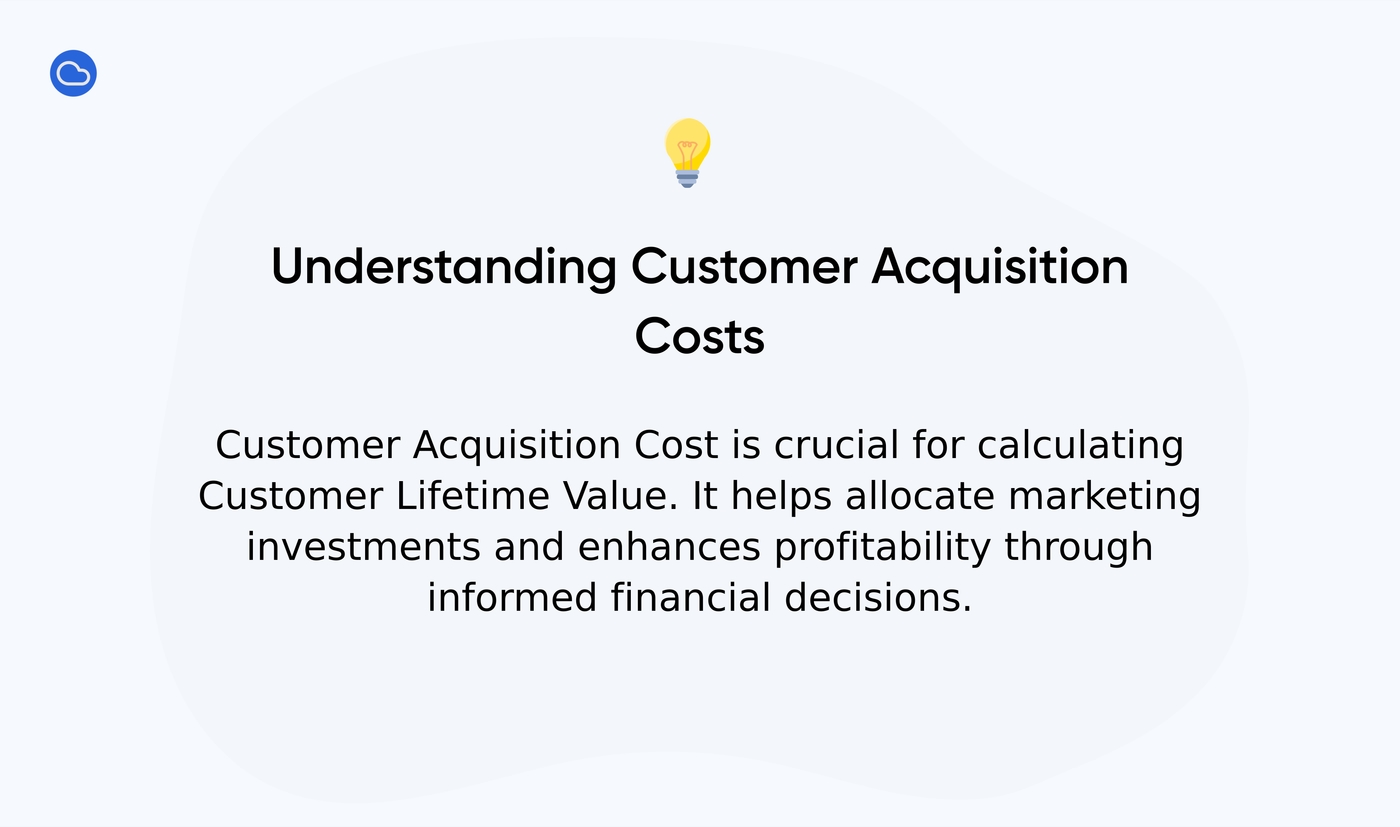
Customer Lifetime Value Formulas
Understanding how to calculate Customer Lifetime Value (CLV) is essential for any business looking to maximize profitability. Several methods exist, varying from simple formulas to more complex analytical techniques. Each method can provide insights tailored to your unique business needs.
Basic Calculation
The simplest way to calculate CLV involves multiplying the average purchase value by purchase frequency and then by the average customer lifespan. For instance, if your average purchase value is $50, customers buy once a month, and your average customer lifespan is three years, the calculation goes as follows:
CLV = Average Purchase Value × Purchase Frequency × Average Customer Lifespan
This results in: 50 × 12 × 3 = $1,800.
Advanced Calculations
More sophisticated methods leverage data analysis and forecasting. These approaches could include cohort analysis or predictive modeling, where you group customers by shared characteristics and utilize data to project future value. These methods allow you to monitor customer segments over time, identifying patterns that inform marketing strategies.
Have you considered how different customer segments might have dramatically different lifetime values? This kind of insight can completely transform your marketing approach.
Discount Rate Method
Incorporating a discount rate into your calculation adjusts the formula for the time value of money. This approach accounts for how future earnings may lose value, offering a clearer financial picture. To apply this, you might use the discounted cash flow formula:
CLV = (Revenue from Customer / (1 + r)^n)
Here, ‘r’ represents the discount rate, while ‘n’ indicates the number of years.
Whichever method you choose to compute CLV, understanding these formulas equips you to make more informed decisions about customer acquisition and retention strategies. For deeper insights and practical tools, check out this excellent resource from Shopify.
Step-by-Step Guide to Calculate CLV
Understanding how to calculate customer lifetime value (CLV) is vital for effectively managing your business finances. This guide provides clear steps to help you apply this metric to your data.
First, gather your sales data. You’ll need total revenue, the number of customers, and any costs associated with acquiring these customers. I’ve seen businesses thrive after meticulously tracking these numbers. Knowing your average purchase value can be a game changer.
Start with the average purchase value. Divide your total revenue by the number of orders during a specific timeframe. This calculation lays the foundation for understanding customer spending.
Next, calculate purchase frequency. By dividing the total number of orders by the unique number of customers, you can see how often customers make purchases. Tracking this metric helped us identify loyal customers in our business.
Customer value comes next. Multiply your average purchase value by the purchase frequency to find out how much each customer generates over time. This insight drives your marketing strategies and resource allocation.
Estimating the average customer lifespan is key to making your CLV calculation complete. Analyze churn rates and historical customer data to gather insights about how long customers usually stay engaged. I recommend comparing data over different periods to get a well-rounded estimate.
Finally, factor in customer acquisition cost (CAC). Knowing the expenses involved in gaining new customers is essential. Subtract your CAC from customer value to calculate net CLV. This step gives you a clearer picture of actual profitability.
-
Collect comprehensive sales and customer data
-
Calculate average purchase value
-
Determine purchase frequency
-
Multiply to find customer value
-
Estimate customer lifespan
-
Factor in acquisition costs
Implementing these steps within your data collection process can profoundly impact your marketing decisions. You might find, as we have, that understanding even the simplest figures can lead to remarkable insights.
Advanced CLV Calculation Methods
Historical Method
Using past purchase data, the historical method aims to estimate the future value of customers. This approach relies on analyzing previous transactions to determine trends and patterns. This method works well for businesses with consistent purchasing behaviors.
Consider a scenario where you track customer spending over a year. By evaluating how much they typically spend, you can project future purchases. This helps in budgeting and strategizing, especially for seasonal businesses. Yet, this method has limitations. It may not accurately reflect changes in consumer behavior due to market shifts or economic factors.
Businesses should utilize this method when they have ample historical data. If customer behavior remains stable, it can offer valuable insights. Look out for signs of change, as they might signal that it’s time to adapt your strategies.
Combining the historical method with other approaches can lead to a more comprehensive understanding of customer lifetime value. Using this blend enhances accuracy, allowing for better decision-making in your marketing efforts. After all, the past can be a good indicator of the future—but it’s rarely the whole story.
Cohort Analysis
Cohort analysis allows you to group customers by shared characteristics, uncovering vital patterns in revenue and retention. This approach reveals loyal segments and identifies drop-off points. I’ve experienced how powerful this can be for businesses aiming to understand their customer base better.
When you categorize customers, insights emerge. For instance, you might notice that customers who joined during a particular campaign tend to stay longer and spend more. These insights drive tailored marketing efforts and retention strategies.
What would happen if you could identify exactly which customer acquisition channels bring in your highest-value customers?
Implementing cohort analysis isn’t as complex as it sounds. Start by deciding which characteristics matter most to you: acquisition date, purchase behavior, or even demographics. Tracking how these groups perform over time can help pinpoint trends, for instance, which customer segments are most vulnerable to churn. The knowledge gained informs your approach to customer engagement.
Predictive Modeling
Predictive modeling utilizes machine learning and statistical techniques to forecast customer behavior and value. This method analyzes various data points to identify patterns that help businesses anticipate future actions. I personally find predictive modeling fascinating due to its ability to provide insights that guide decision-making. Understanding your customers’ future behaviors can profoundly impact your marketing strategies.
When you explore predictive modeling, consider the value of historical data. By examining past interactions, businesses can recognize trends that indicate potential future revenue. For instance, if customers previously purchased high-value items, the model might suggest similar interests for other customers.
Integrating predictive modeling into your CLV analysis can equip you with actionable insights, promoting better resource allocation. Businesses that embrace this technology often experience improved engagement and retention rates. It’s a step toward understanding customer journeys and delivering personalized experiences that resonate deeply with them.
CLV with Discount Rate
Incorporating the time value of money into your Customer Lifetime Value (CLV) calculation enhances accuracy. You want to consider that a dollar today has a different value than a dollar in the future. To reflect this, use a discount rate. This approach adjusts future cash flows, making financial planning more reliable.
Applying a discount rate helps businesses understand the real value of future customer revenue. This strategy encourages smarter investment decisions. It allows for the anticipation of customer profitability over time. You can also tailor the discount rate based on factors like risk and market conditions.
For a deeper understanding, check out this comprehensive resource on how to calculate CLV for B2C brands. You’ll discover methods that incorporate various financial aspects for an effective CLV analysis.
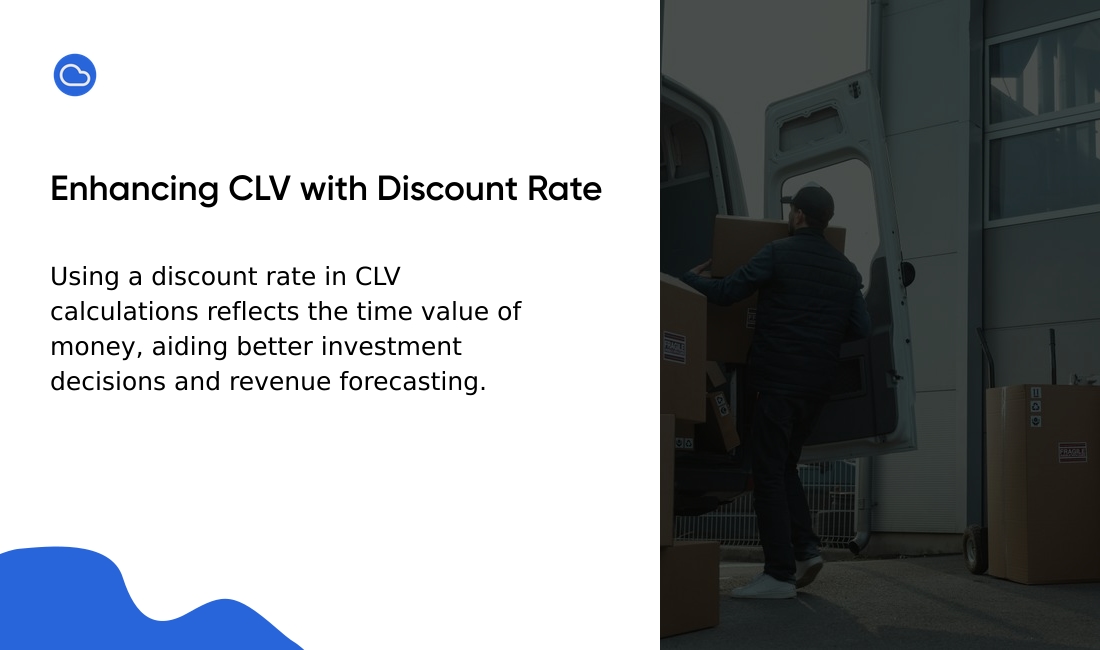
Tools for Calculating Customer Lifetime Value
Understanding how to calculate customer lifetime value (CLV) can transform your business approach. Various tools simplify this critical task. Software solutions, spreadsheet templates, and online calculators are designed to compute and track CLV efficiently.
For those who prefer software, platforms like Shopify offer integrated tools. These allow seamless tracking of customer data combined with sales metrics. These solutions streamline the entire process, making it user-friendly.
Spreadsheet templates also play a crucial role in CLV calculation. Many resources provide ready-to-use formats. These templates allow you to input your data directly, making it easy to calculate customer value metrics. If you’re comfortable with Excel, these templates cater to your needs without overwhelming you with complexity.
Online calculators are another excellent option. Many websites offer quick CLV calculations by entering basic metrics. This approach works well if you need rapid estimates without diving into detailed analysis. These tools are beneficial for initial assessments, especially when you’re short on time.
Each of these tools brings unique advantages. Choosing the right one will depend on your business size and specific needs. Invest time in exploring these options to discover which aligns best with your goals. Your ability to accurately compute lifetime value can significantly influence your marketing strategies and resource allocation.
How to Improve Customer Lifetime Value
Enhancing customer lifetime value (CLV) brings significant benefits to any business. I’ve seen firsthand how small changes in customer experience can yield remarkable results. Improving your CLV involves three main strategies: enriching customer experiences, implementing retention programs, and optimizing the customer journey.
Focusing on customer experiences creates lasting impressions. Providing personalized communications truly makes customers feel valued. For instance, tailored recommendations based on previous purchases can surprise and delight your customers. This kind of engagement encourages repeat business and fosters loyalty.
Retention programs are key to building long-term relationships. Offering rewards or exclusive discounts can significantly motivate customers to stay engaged with your brand. Loyalty programs create a sense of belonging, which customers cherish immensely. When they feel appreciated, they are more likely to return.
How might your business change if you could increase your average customer lifespan by just six months?
Optimizing the customer journey also plays a crucial role. Utilizing feedback channels allows you to identify pain points and improve how customers interact with your brand. I remember using surveys to gather insights; the feedback helped us streamline processes that made the purchasing experience smoother. A seamless journey keeps customers coming back.
Continuously refining your approach enhances your customer relationships. By prioritizing experiences and strengthening retention efforts, you not only increase customer lifetime value but also create a thriving community around your brand.
You might also like: Customer Loyalty: 7 Proven Tips to Retain Your Customers – top-crm

